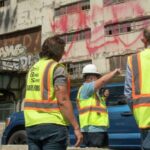Trains? People Are Beginning to Talk!
After a while, you begin to notice. It could be a state Department of Transportation in the Mid-west or a citizens’ group somewhere in the South. But people are starting to talk about passenger rail as the best, most practical, most cost-efficient solution to relentlessly growing traffic and infrastructure problems.

Consider, as just one example of many, the 80-miles between New Orleans and Baton Rouge, the state capital of Louisiana. If you drive it, you’ll be on Interstate 10 most of the way, but there’s heavy traffic at either end and it’ll take you at least an hour-and-a-half … and that’s on a good day.
As an example of the hard-to-explain transportation trends in this country, a recent study showed that 26,000 people from the Baton Rouge area commute to work in New Orleans and almost as many people make the trip every day in the opposite direction … folks who live in or around New Orleans, but have jobs that take them to Baton Rouge. Furthermore, more than two million people live in towns and the rural areas along that 80-mile corridor.
It’s hard to imagine a more classic case for passenger rail. Conventional trains would made that run in just over an hour and high-speed trains would do it in half that time. Do you think a lot of those commuters, maybe even most of them, would give up slogging through that 90-minute commute every day and ride a train to and from their work for a proposed $10 fare?
Louisiana officials—well, those I would consider to be the clear-thinkers, anyway—are doggedly promoting the idea. And some have had the political stones to point out that it probably wasn’t the best idea for Governor Bobby Jindal to scornfully refuse the $300 million federal dollars offered to his state by President Obama in 2009 as a means of boosting the Louisiana economy. Some or even all of that money could have been used to begin preliminary work towards a high-speed rail line linking those two cities.
Let us all hope that eventually we’ll be able to stop bemoaning what might have been and start moving ahead on serious, practical transportation projects, including and most especially passenger rail.



